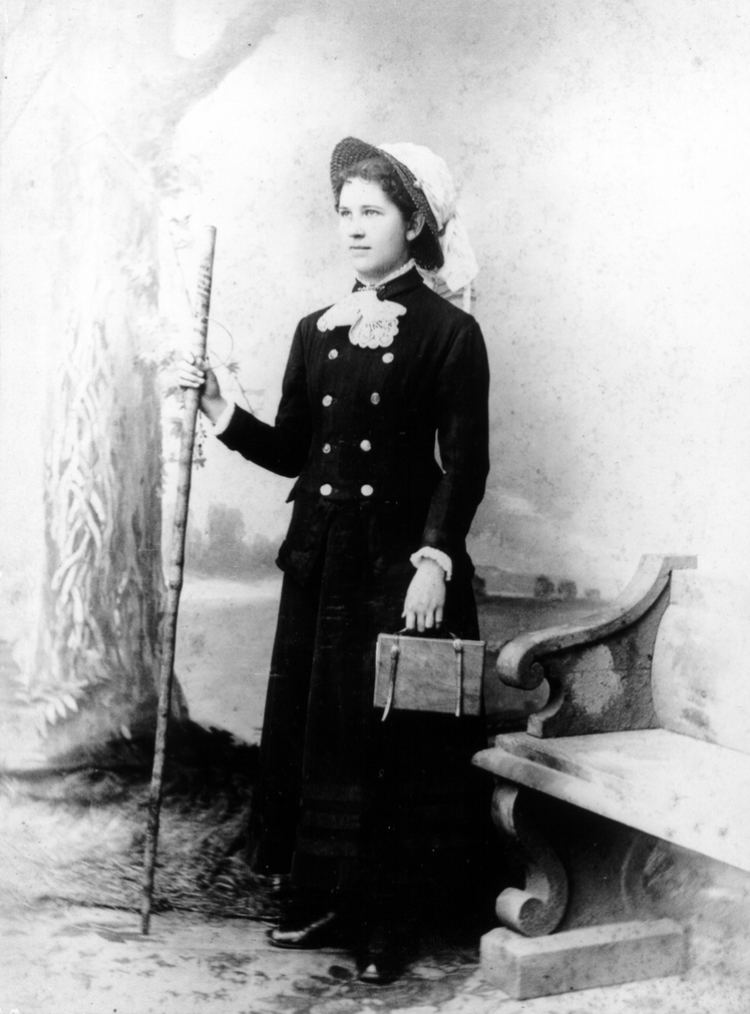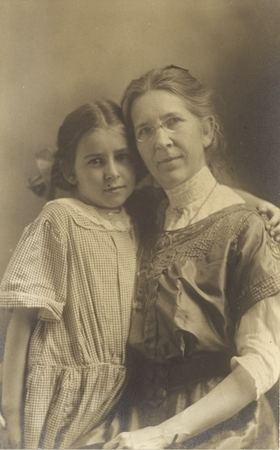Nationality American Name Rosa Eigenmann | Fields Ichthyology | |
 | ||
Books A Revision of the South American Nematognathi Or Cat-fishes | ||
Rosa smith eigenmann by mikiya leslie
Rosa Smith Eigenmann (October 8, 1858 – January 12, 1947) was an American ichthyologist,the branch of zoology devoted to the study of fish. First publishing her original science alone, she later collaborated with her husband Carl H. Eigenmann; some 150 species of fish are today credited "Eigenmann & Eigenmann" as a result.
Contents

Biography

Eigenmann was born in Monmouth, Illinois, the last of nine children. While her family was originally from California, they had moved to Illinois to start a newspaper. As Rosa was frail and in poor health, the family returned to California, settling in San Diego in 1876.

After schooling at the Point Loma Seminary in San Diego, Eigenmann attended a five-week course at a business college in San Francisco, one of only two women in the class; the other was Kate Sessions, later an important San Diego horticulturalist known as the "Mother of Balboa Park." Eigenmann was interested in the local natural history from an early age, and joined the San Diego Society of Natural History (San Diego Natural History Museum) in 1878 as an associate member. The next year, Eigenmann became the first woman with full membership in the San Diego Society of Natural History and assumed the roles of librarian and recording secretary for several years in the 1880s.

David Starr Jordan visited San Diego in 1879, and met Rosa Smith then, either at a Society meeting, or because he rented a horse and buggy from her father. At about this time, she had discovered the blind goby Othonops eos living in caves underneath Point Loma Peninsula. Jordan was impressed and encouraged her to study with him at Indiana University; she spent two years there, but had to return home due to an illness in the family. While at Indiana, she met fellow student Carl Eigenmann, and continued corresponding with him after returning to San Diego, as well as publishing formal descriptions of the blind goby and other fish. Carl and Rosa were married in San Diego on August 20, 1887. At the time of her marriage at age 28, Eigenmann had published a list of fish in the San Diego area, been asked by the Smithsonian Museum to make a collection of surf perch from the San Diego area, and published 10 single-authored primary papers in the Proceedings of the U.S. National Museum.

Immediately after their marriage, the Eigenmanns left for Harvard University, where they studied its collections, and Rosa became the first woman to attend graduate-level classes at Harvard, studying cryptogamic botany with Professor William G. Farlow. The Eigenmanns also published the first of many collaborative works while in Cambridge, including a 500-page review of South American catfishes. Returning to California in 1889, they established a biological station in San Diego and continued their studies of fish in the region. They both held appointments as curators at the California Academy of Sciences.
In 1891, Carl became Professor of Zoology at Indiana University in Bloomington. Rosa continued to collaborate with him, but less frequently, as she bore most of the family responsibilities. Of their five children, Lucretia Margaretha Eigenmann, 1889- , spent the later years of her life near Butlerville, Ind.; Charlotte Elizabeth Eigenmann, 1891-1959, graduated from Stanford and had a career in editorial work; Theodore Smith Eigenmann, 1893-1970, who after serving in the army in 1918 became a patient of veterans' hospitals; Adele Rosa (Eigenmann) Eiler, 1896-1978, who accompanied her father on the Irwin Expedition to South America in 1918-1919, received her medical degree from Indiana University in 1921, later married John Oliver Eiler and resided in San Diego; Thora Marie Eigenmann, 1901-1968, graduated from the University of Missouri and pursued a career in writing.
Between 1880 and 1893, Rosa Smith Eigenmann published 37 papers (12 single-authored, 25 co-authored, most with her husband). She was president of the (Women's) National Science Club in 1895, presenting a lecture that year entitled "Women in Science." Eigenmann discussed the difficulty of pursuing original research as a wife and mother, and argued that women's contributions in science should be realistically evaluated and appropriately praised as science, not as science done "by a woman." She was the first woman president of Sigma Xi, a national honorary scientific society.
When Carl suffered a stroke in 1927, the family returned to San Diego. After Carl died in April of that year, Rosa remained living in Coronado, California, but was no longer scientifically active. Rosa Smith Eigenmann died on January 12, 1947 in San Diego.
